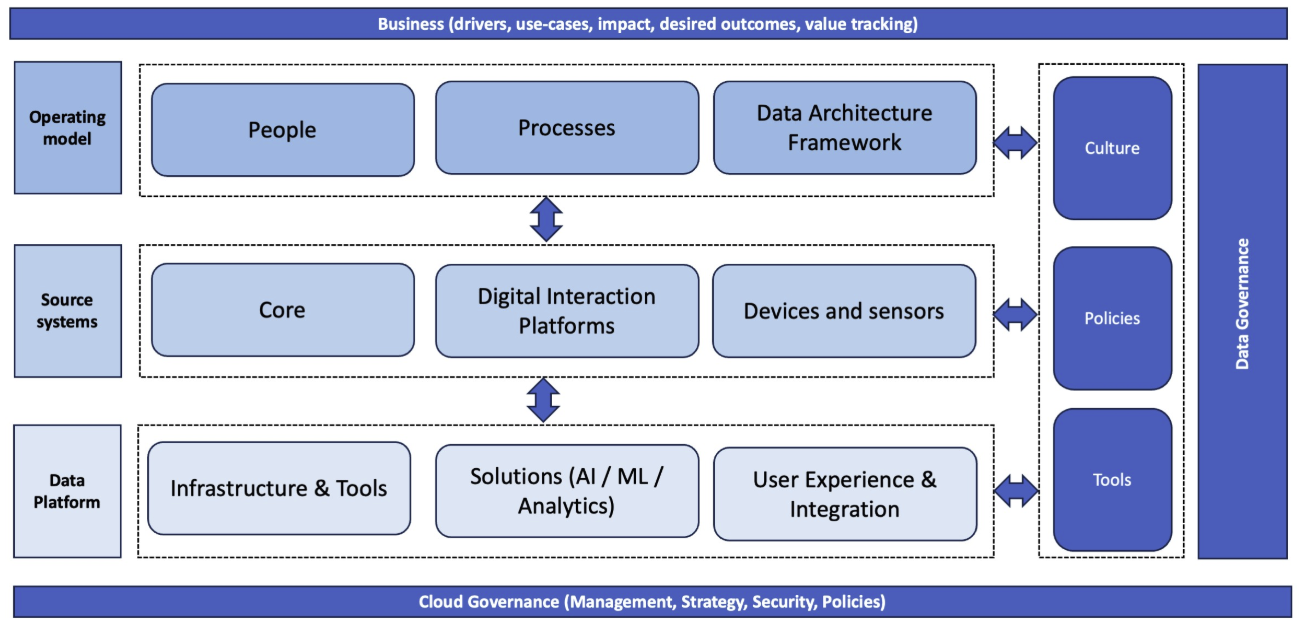Czym jest Digital Process Automation (Automatyzacja Procesów Cyfrowych)?
Digital Process Automation (DPA) is an approach that uses digital technologies to automate end-to-end business processes. In practice, it means standardizing, digitizing, and automating repetitive workflows across the organization using IT tools. DPA evolved from the concept of Business Process Management and has grown alongside the development of low-code platforms and artificial intelligence solutions. Unlike basic task automation, digital process automation focuses on automating entire workflows, often involving multiple applications and stages that require human-system interaction. As a result, organizations can eliminate bottlenecks and reduce manual interventions, leading to greater consistency and operational efficiency across their operations.
AutomAIze is an example of a company specializing in implementing digital process automation. The firm focuses on optimizing back-office processes in the B2B service sector — including finance, accounting, reporting, and administration. By implementing AI-powered tools, low-code platforms, and integrating existing IT systems, AutomAIze helps organizations reduce manual workload, cut operational costs, and improve process efficiency in these areas. This strategic approach to internal process automation plays a vital role in the digital transformation of B2B service companies aiming for long-term productivity and scalability.
The Value of Digital Process Automation for B2B Service Companies
In B2B service organizations—such as consulting, financial, or outsourcing firms—many internal processes still rely heavily on manual work: document processing, data entry, and report generation. Digital process automation brings a wide range of business benefits, particularly valuable for companies focused on operational efficiency and scalable service delivery. The key advantages of DPA include:
- Time savings and increased productivity - automated workflows operate significantly faster than manual ones. Processes that used to take days can now be completed in minutes, allowing employees to complete tasks more quickly and handle a greater workload in the same timeframe. For example, customer inquiries or invoice approvals that once took hours can now be processed in near real time.
- Reduced operational costs Automation minimizes the need for manual labor, enabling companies to cut process-related costs by up to 50%. pearlorganisation.com. Replacing repetitive human tasks with software solutions lowers labor costs while often improving service quality. Moreover, automation investments tend to pay off quickly—freed-up employee capacity can be reallocated to higher-value tasks such as analysis, innovation, or customer engagement.
- Fewer errors and higher data quality - manual data entry and document handling are prone to human error. DPA eliminates this issue by automating routine administrative tasks, removing human error from the equation. As a result, system data is more accurate, reports are more reliable, and compliance with procedures or regulations is easier to maintain. Higher data accuracy also leads to better, more confident business decisions.
- Scalability and improved operational efficiency - DPA solutions enable organizations to grow without proportionally increasing costs or headcount. Automated processes are highly scalable, meaning they can handle larger transaction volumes without the need for additional staff. Through system integration and standardized workflows, companies become more agile—better equipped to introduce new services or adapt to rising demand. At the same time, employees freed from tedious tasks can focus on process improvement, client service, or data analysis, further boosting overall performance.
Narzędzia wykorzystywane do digital process automation
Osiągnięcie cyfrowej automatyzacji procesów wymaga odpowiednich narzędzi programistycznych i platform. W ostatnich latach pojawiło się wiele rozwiązań umożliwiających automatyzację nawet złożonych procesów przy niewielkim udziale kodowania – co ułatwia wdrażanie DPA w działach biznesowych. Do najczęściej wykorzystywanych narzędzi w obszarze digital process automation należą:
- Robotyzacja procesów (RPA) – narzędzia RPA pozwalają tworzyć tzw. „roboty software’owe”, które naśladują czynności użytkownika w aplikacjach. Świetnie sprawdzają się w automatyzacji powtarzalnych, opartych na regułach zadań, takich jak przenoszenie danych między systemami, uzupełnianie formularzy czy wykonywanie operacji w interfejsach webowych. Przykładowi dostawcy RPA to m.in. UiPath, Blue Prism czy Automation Anywhere. Roboty te działają 24/7, eliminując opóźnienia i błędy wynikające ze zmęczenia pracownika.
- Platformy low-code / no-code – są to narzędzia do budowy aplikacji i procesów bez potrzeby tradycyjnego programowania. Umożliwiają definiowanie workflow, formularzy, integracji za pomocą graficznego interfejsu. Przykładem jest Microsoft Power Platform (Power Apps, Power Automate), która pozwala łatwo tworzyć automatyczne przepływy pracy w ekosystemie Office 365. Podobnie Google AppSheet czy Zapier oferują możliwość łączenia różnych usług w zautomatyzowane sekwencje działań. Platformy low-code przyspieszają wdrożenie DPA, bo rozwiązania mogą budować nawet analitycy biznesowi, a nie wyłącznie programiściautomaize.pl.
- Sztuczna inteligencja (AI) i OCR – coraz częściej automatyzacja procesów wspierana jest przez komponenty AI. Uczenie maszynowe i inteligentne rozpoznawanie dokumentów (OCR) pozwalają automatycznie odczytywać dane z faktur, formularzy czy e-maili, które wcześniej musiał analizować człowiek. AI znajduje zastosowanie w procesach wymagających podejmowania decyzji na podstawie danych – np. ocena wniosków kredytowych, kategoryzacja zgłoszeń od klientów, chatboty obsługujące klientów. Dzięki AI automatyzacja wychodzi poza proste schematy i radzi sobie z nieustrukturyzowanymi danymi (tekst, skany, PDFy). AutomAIze wdraża np. rozwiązania AI do przetwarzania dokumentów finansowych, co pozwala znacząco usprawnić pracę działów księgowości.
- Integracja systemów i API – kluczowym elementem DPA jest połączenie rozproszonych systemów w spójny ekosystem. Wykorzystuje się do tego integracje przez API lub platformy integration platform as a service (np. Make.com czy Zapier), które umożliwiają przepływ danych między aplikacjami Dzięki integracji, proces może automatycznie pobierać dane z jednego systemu (np. CRM), przetwarzać je i zapisywać wynik w innym (np. systemie finansowym) bez udziału człowieka. Eliminujemy tym samym ręczne eksporty/importy plików czy przekazywanie informacji e-mailem. Dobrze zintegrowane systemy to fundament automatyzacji end-to-end, gdzie informacja płynie bez zakłóceń przez wszystkie etapy procesu.
Examples of Digital Process Automation in Action (Case Studies)
To better illustrate how digital process automation drives real improvements, here are three practical examples of how DPA has been implemented in B2B companies across different industries:
Invoice Processing Automation (Finance)
A finance department in a B2B service company automated its cost invoice processing using AI. The solution combined intelligent document recognition (OCR) with an AI module that extracted data from invoices and automatically entered it into the ERP system. The result was an 80% reduction in invoice handling costs and a complete elimination of manual data entry. Accounting staff saved dozens of hours each month—time that could be redirected toward financial analysis and control tasks instead of repetitive data input. (more here).
Executive Reporting Automation
JA leading European bank integrated operational reports from various branches into a single Business Intelligence platform (Power BI). As a result, hundreds of manually created Excel reports were replaced by automated KPI dashboards. The bank achieved 99% data consistency and significantly accelerated the flow of information (more here). Management could now track key performance indicators in near real-time (with data refreshing every few minutes instead of quarterly), while operations teams freed up around 40% of the time previously spent on manual report generation—redirecting efforts to data analysis and corrective actions. The transformation of reporting processes led to better, data-driven decision-making and improved information discipline across the organization.
Automated document generation (Administration)
A B2B services firm streamlined the tedious process of preparing client proposals and contracts. Using the Microsoft Power Automate low-code platform, they integrated CRM data and external registries (e.g., company databases) with Word document templates. Now, proposals and contracts are generated automatically—data is pulled into the correct template fields, and the final document is immediately archived.(more here). This led to a time savings of approximately 80% compared to manual document preparation. Manual copy-pasting between Excel and Word was virtually eliminated, reducing formatting errors and content mistakes. Administrative staff can now focus on customer service and refining proposals rather than repetitive “copy-paste” tasks.
Summary of digital process automation's role in operational efficiency
Digital process automation is becoming a critical component of growth strategies for B2B companies seeking to strengthen their competitive edge through improved internal efficiency. It delivers measurable benefits—from cost reduction and time savings to enhanced data quality, improved service delivery, and greater business scalability. Importantly, implementing DPA doesn’t require building everything from scratch. With modern low-code platforms and AI modules, organizations can quickly enhance existing processes and integrate current systems. Initial pilot implementations often deliver a return on investment within just a few months and become the foundation for broader automation initiatives.
B2B service firms that embrace digital process automation not only achieve lower operational costs, but also gain better control over processes and higher employee satisfaction, as repetitive tasks are eliminated. In this way, DPA proves to be a long-term investment in productivity growth and service quality.
In an era of digital transformation and increasing competitive pressure, digital process automation is no longer optional—it’s essential for companies striving for operational excellence. It clearly demonstrates that modern technology can lift the burden of routine work, allowing teams to focus on what truly matters: business growth and delivering maximum value to customers.
Digital process automation is a key to cost saings
Have an idea for automation? Let’s talk! We’ll help you get started and guide you through the key challenges of building a successful digital process automation project.


